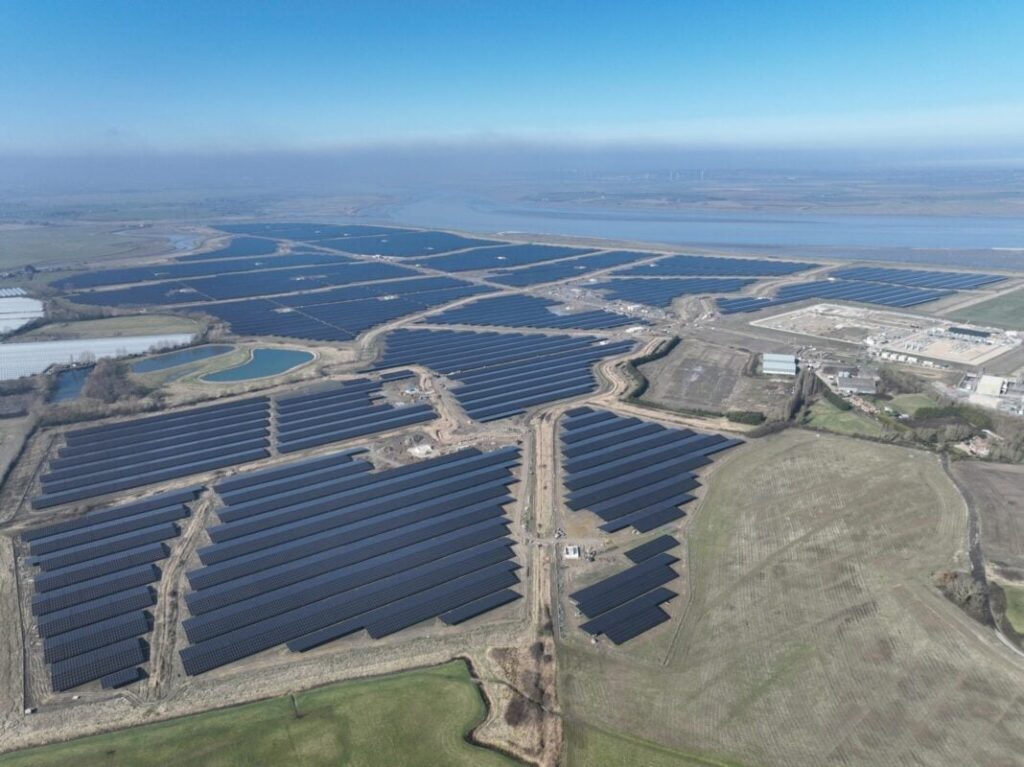A study by Lancaster University shows that 90 GW of solar capacity only needs 0.39% of the country, which does not yet organize a solar farm in the UK.
Scientists from Lancaster University studied satellite images of the VK to assess how many Landzonne energy plants cover for a study conducted in collaboration with NextEnergy Capital and published in the Progress magazine in Energy.
The study showed that if solar implementation continues with the same part of the PV on the roof mounted to land as so far (taking into account on the ground with approximately 55% of the total) than to meet the ambitious 50 GW capacity that is aimed at 2030, only 0.22% of extra country should be hosted.
To achieve the highest ambition objective of 90 GW of Solar generation by 2050, 0.39% of the country that does not yet organize a solar farm would be needed.
If all future solar installations were mounted on the ground, instead of a mixture of territory and floating, then to achieve the same goals, 0.4% and 0.72% would be needed.
The paper includes the first dataset for solar farm that must be produced using manual digitization methods from satellite images. Looking at the current state of British land use, the results show that between 15,580 and 17,364 hectares are occupied by solar developments.
This range is given because, although the lower figure is what satellite images demonstrated, researchers took into account the remaining solar sites that are registered on the government planning planning that does not appear in satellite images, because the available images of the UK vary.
Previous figures suggested that ground confirmation PV used approximately 0.08% of the British country, an estimate extrapolated from the generating capacity of and land occupied by a sample of solar energy plants.
The type of land used by solar developments
According to the main author of the study Dr. Hollie Blaydes, senior research employee at Lancaster University, “is having an accurate figure of British Landfarer’s use essential for correctly informing future strategic planning decisions on energy and food security, stimulating biodiversity and fulfilling our net obligations”.
The researchers say that about 95% of the country used by solar farms used to be agricultural land. About two -thirds of them used to be arable land and about a third improved grassland.
However, the authors emphasize that it is very difficult to accurately determine the quality of agricultural land on which sun factories are built such as, they say, the current maps of agricultural land quality are not accurate enough for planning decisions.
As dealt with in the article, according to planning guidance, solar development on the best and most versatile (BMV) land of a degree between 1-3A since 2015 requires “justification by the most convincing evidence”.
It is unlikely that a large amount of the former agricultural land that is now used for solar PV was of sufficient high quality that food security is threatened.
Professor Alona Armstrong, co-author of Lancaster University’s study, said that “Land use for solar energy will continue to grow in the UK given our net zero target.
“Ensure that they also provide benefits to nature and that they continue to support food production, the growing pressure of land use will help reduce. While we are in the direction of meeting Net Zero, there will be decisions about how we use our country best.”
As Armstrong noted, the country around the PV systems that form a solar energy power plant can provide benefits, including offering habitat for wildlife and even grazing cattle -both of these things are extensively covered by Solar -Energy Portal.

